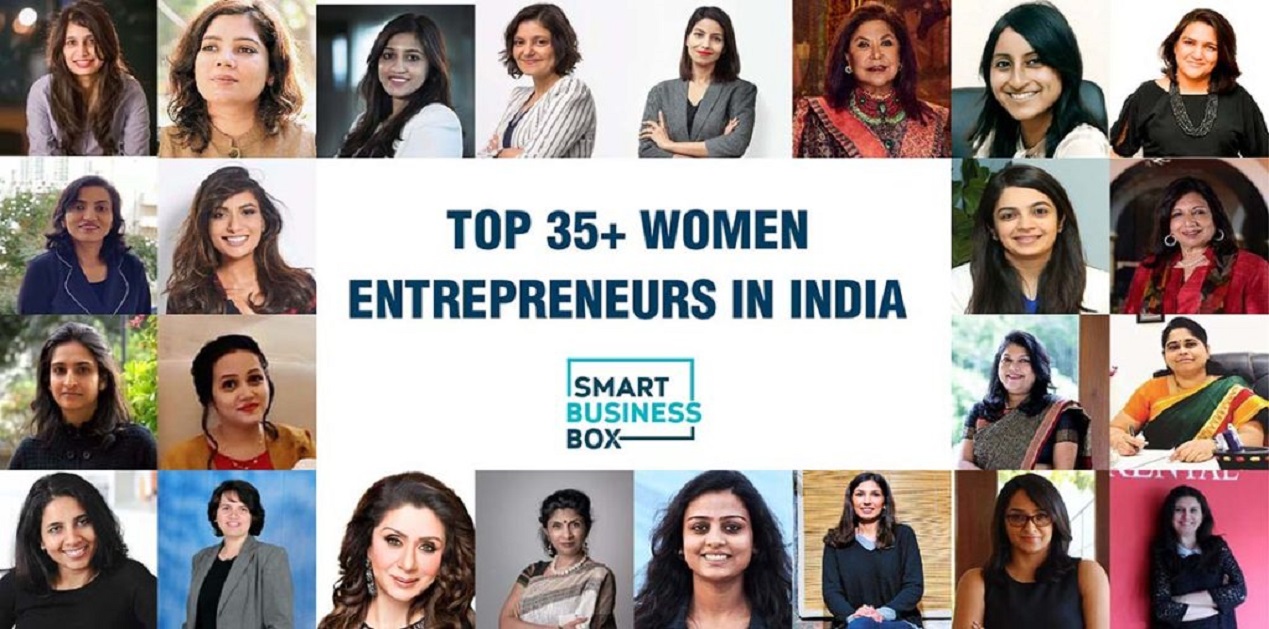During India's G20 Presidency, there was a focus on women empowerment through women-led development. At the G20 Ministerial Conference on Women’s Empowerment in August 2023, Prime Minister Narendra Modi stated three core focus areas of India’s G20 Presidency. These include education, entrepreneurship and promoting women’s leadership at all levels including grassroots. Highlighting the importance of women’s entrepreneurship, he stated that it is a “Win-Win for Equity and Economy”. Additionally, the G20 Alliance for the Empowerment and Progression of Women’s Economic Representation (G20 EMPOWER) is accelerating women’s leadership and empowerment in the private sector. For the year 2023, G20 EMPOWER committed to showcasing the role of women’s entrepreneurship towards the economic empowerment of women as well as overall growth of a nation’s economy.
Empowerment stands for the expansion of assets and capabilities to participate in, negotiate with, influence, control and hold accountable institutions that affect them. This definition of the World Bank provides the understanding of how empowerment is a political process which involves inclusion and participation as well as increase in social capital. It is a paradigm shift in development strategy where the world countries are now focusing on entrepreneurship as a new dimension for the rising aspirations of youth and women. Entrepreneurship manifests the ability to move within or outside the existing organisation, where it creates new economic opportunities such as new products and production methods as well as new ideas in the market. The potential of entrepreneurship to act as a mechanism for the expansion of human capabilities has been identified.
As the Government of India pushed for the growth of entrepreneurship culture in India with the Start Up India programme and various other schemes, there was a rise in participation of women as well. Few names that come immediately to mind are Radhika Ghai, co-founder of Shopclues and founder of Kindlife and the first woman to enter unicorn club; Kiran Mazumdar Shaw, founder of Biocon Ltd; Falguni Nayar, founder of Nykaa; Vandana Luthra, founder of VLCC Health Care Limited; Vineeta Singh founded Sugar Cosmetics; Malika Datt Sadani, founder of The Moms Co and many more. There are also women entrepreneurs who have worked on social and cultural issues. Aditi Gupta formed Menstrupedia, a business with the mission of raising awareness about menstruation. Sudha Murthy, not just the founder of Infosys, but also a social worker. And in recent years, there has been a rise in young women entrepreneurs. At age of 22, Kanika Tekriwal founded her aviation startup. Two sisters, Sujata and Taniya established their firm, Suta Saris. Apart from these big names, we have seen a rise of women operating micro, small and medium enterprises (MSMEs). According to the Annual Report of the Ministry of MSMEs, around 20 per cent of MSMEs are women-led (2020-21).
The rise of entrepreneurship among women is due to various push and pull factors. Women constitute around 48 per cent of the population in India but contribute only 17 per cent of the GDP. Women’s economic participation remains low due to various social and economic factors. Female Labour Force Participation (FLFP) rates declined from 34.1 per cent in 1990-00 to 27.2 per cent in 2011-12 to 23.3 per cent in 2017-18. Variations also exist between rural and urban areas. In rural areas, participation of women decreased while the same has increased in urban areas. In addition to lower participation in the labour market, women workers are paid 43 per cent less than men for performing the same job with the same qualifications. It must also be noted that women are concentrated in few sectors, such as pickle making, clothing or any food related items. Therefore, entrepreneurship has provided women with an opportunity to participate in the economic sphere. Women entrepreneurship helps women to contribute to the family income with flexible timing conditions, which helps them maintain work and life balance.
According to the Sixth Economic Census released by the Ministry of Statistics and Programme Implementation, India, women constitute around 14 per cent of the total entrepreneurship i.e. 8.05 million out of the total 58.5 million entrepreneurs. Though the numbers are less, they are certainly rising. Though women entrepreneurs face a set of economic, social and cultural challenges, they are making a difference to the economy and society. To name a few challenges, women lack property rights because of which they lack access to credit; they are engaged in non-agricultural activities and the manufacturing and retail trade are the dominant sectors; and mostly don't hire workers due to their small scale operations. Even during the COVID-19 pandemic, women entrepreneurs faced problems, with many scholars referring to the impact of crises as a “she-cession”. Under the UdyamStree campaign, the Centre for Monitoring Indian Economy, highlighted that 57 per cent of women entrepreneurs reported a decline in their businesses because of the pandemic.
Nevertheless, there is a ray of hope as women entrepreneurs have adopted innovative and adaptive ways to continue their survival. Women entrepreneurs reinvented and swiftly adapted to the ‘new normal’ and witnessed a revival in their businesses. The EdelGive conducted a study on women entrepreneurs across 13 states in India with a sample size of 1200 women. The study concluded that 19 percent of the entrepreneurs noted an increase in financial gains. For instance, the study recorded the story of Maharashtra-based Savita Dishe, who used to sell brooms at weekly haats, quickly adapted WhatsApp as a marketing tool, and shifted to making Mumbai-style vada pao. By shifting to the online platform for sourcing, marketing and selling, Dishe earned more than what she did previously.
Such stories would not have been heard were it not for the efforts made by the Government of India for digital financial inclusion much before the onset of COVID-19. Digital inclusion meant that women who did not have access to markets and were burdened with unpaid labour at home and had limited mobility, could now access markets and networks. The Government has also started market linkage support programs such as ‘Hunar Haat’ for artisans and self-help group-based women entrepreneurs.
In addition, to provide financial support, UN Women has collaborated with the State Bank of India (SBI) and launched a Women Livelihood Bond scheme. To further provide loans, Nari Shakti Scheme was launched to provide soft loans. From 2016-2021, the Prime Minister’s Employment Generation Programme (PMEGP) provided funds to over 107,000 women entrepreneurs. In addition, the government has mandated targeted procurement from women entrepreneurs.
To encourage participation of women in other sectors, the Women in Engineering, Science and Technology (WEST) programme was launched. The Government of India has also focussed on up-skilling programs for women entrepreneurs and providing them with mentorship. The National Commission of Women, in collaboration with the Indian Institute of Management, Bangalore, conducted an online training program to promote digital learning of 5,000 aspiring women entrepreneurs. The Niti Aayog had set up Women Entrepreneurship Platform (WEP) a single-window platform for women entrepreneurs to provide them information about government schemes, funding, and marketing assistance for their businesses.
As India held the presidency of G20, it conducted six in-person conferences and 86 virtual international meetings that witnessed the participation of over 300 delegates from 18 G20 countries and 7 Guest countries. Indian Prime Minister Shri Narendra Modi stated that empowerment of women is the bedrock of our society’s development and their leadership, especially at the grassroots, is crucial for our inclusive and sustainable progress. In this background, it is essential that the barriers faced by women entrepreneurs are addressed via a multi-pronged approach through mentoring and capacity building, engendering markets and financing, scaling up innovations and adopting global best practices. Moving from MDGs to SDGs has had a positive impact especially for women. The SDG Goal 5 aims to achieve gender equality and empower all women and girls. G20 EMPOWER 2023 also aims to pursue women’s empowerment under SDG Goal 5 through the G20 work streams. To that end, the focus area of “Women’s Entrepreneurship: A Win-Win for Equity and Economy” is a step in the right direction.
(The paper is the author’s individual scholastic articulation. The author certifies that the article/paper is original in content, unpublished and it has not been submitted for publication/web upload elsewhere, and that the facts and figures quoted are duly referenced, as needed, and are believed to be correct). (The paper does not necessarily represent the organisational stance... More >>
Image Source: https://www.smartbusinessbox.in/wp-content/uploads/2020/07/2020-07-14-min-1024x535.jpg











Post new comment